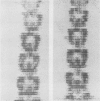Abstract
Seven female runners found to have exercise-induced amenorrhea and decreased bone mineral were reevaluated after 15 months. During the 15-month period, four runners took supplemental calcium and reduced their weekly running distance by 43%, resulting in an average 5% increase in body weight, increased estradiol levels and eumenorrhea. Bone mineral content increased from 1.003±0.097 to 1.070±0.089 grams per cm.2 Three runners continued to have amenorrhea, with no change in running distance or body weight. Estradiol levels remained abnormally low and there was no significant change in the bone mineral content, although all three took supplemental calcium. We found that early osteopenia associated with exercise-induced menstrual dysfunction improved when runners reduced their running distance, gained weight and became eumenorrheic.
Full text
PDF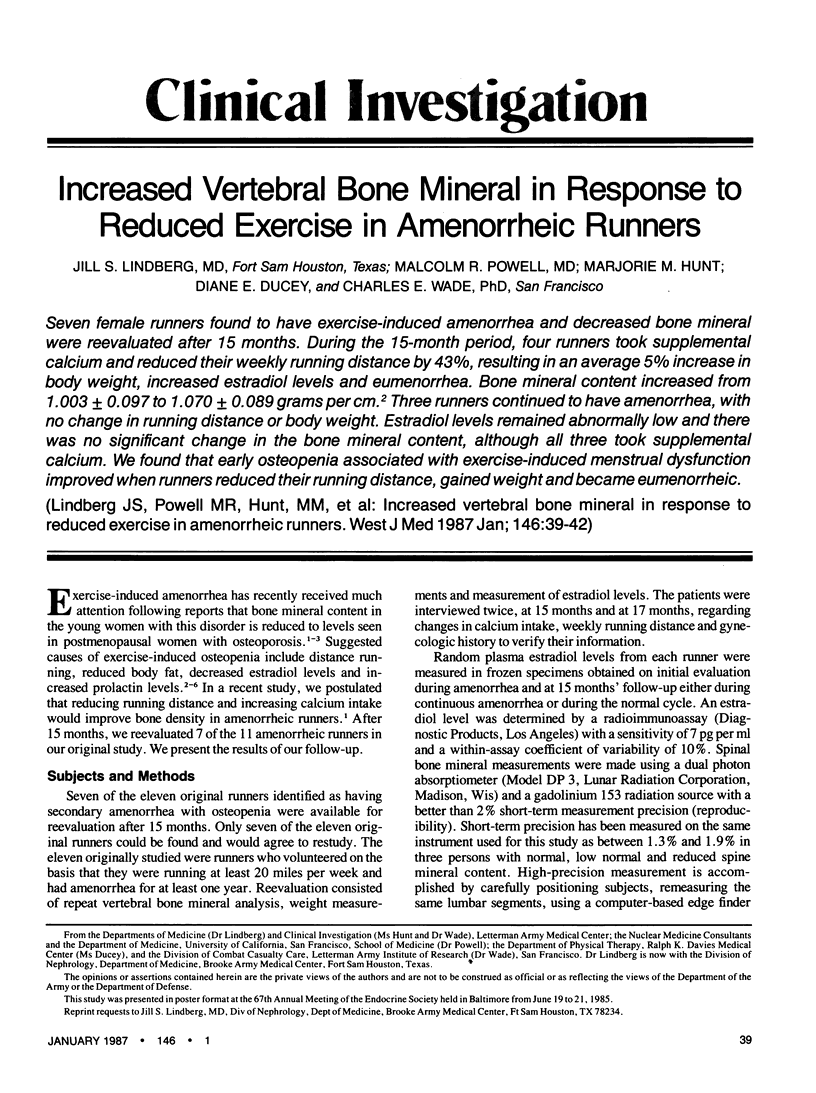
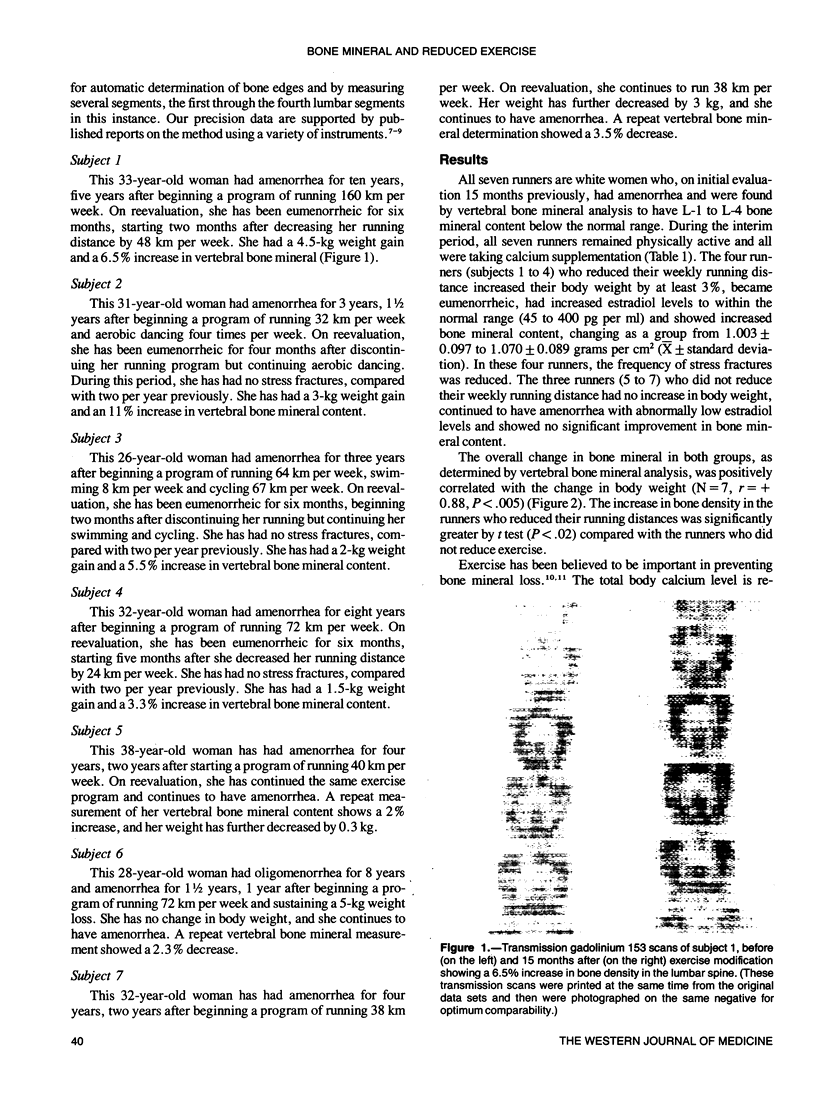
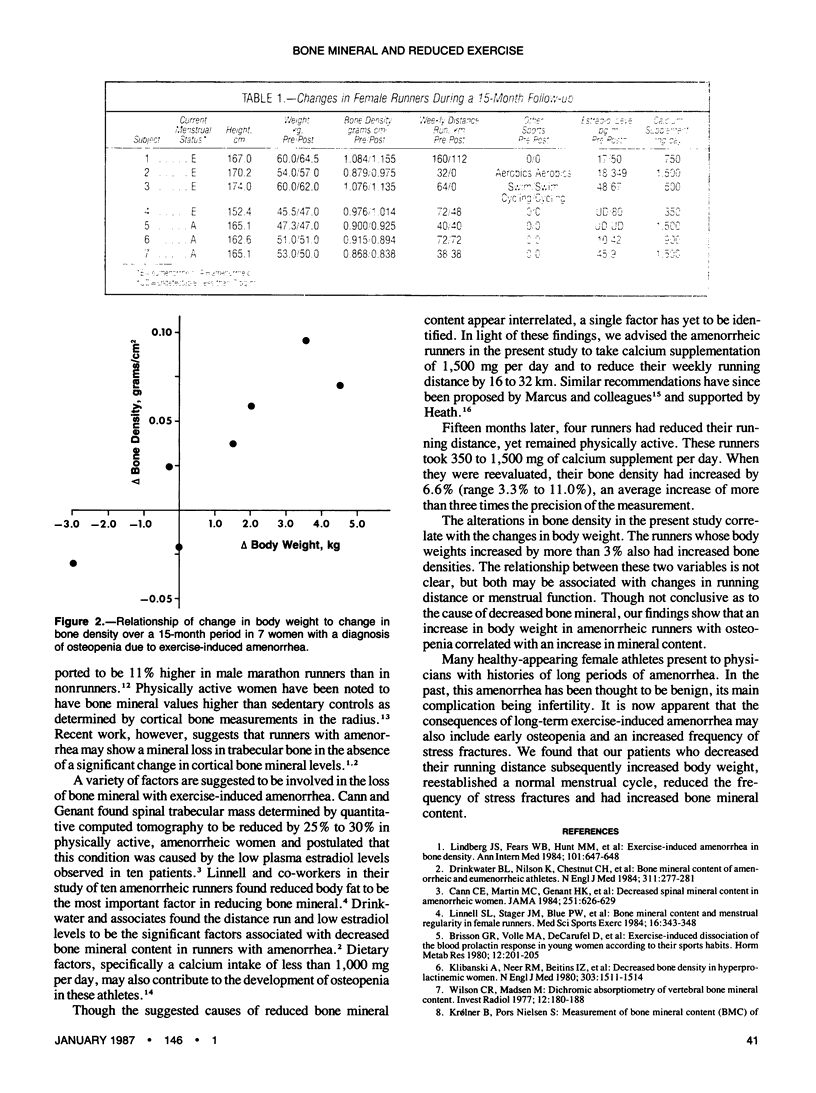
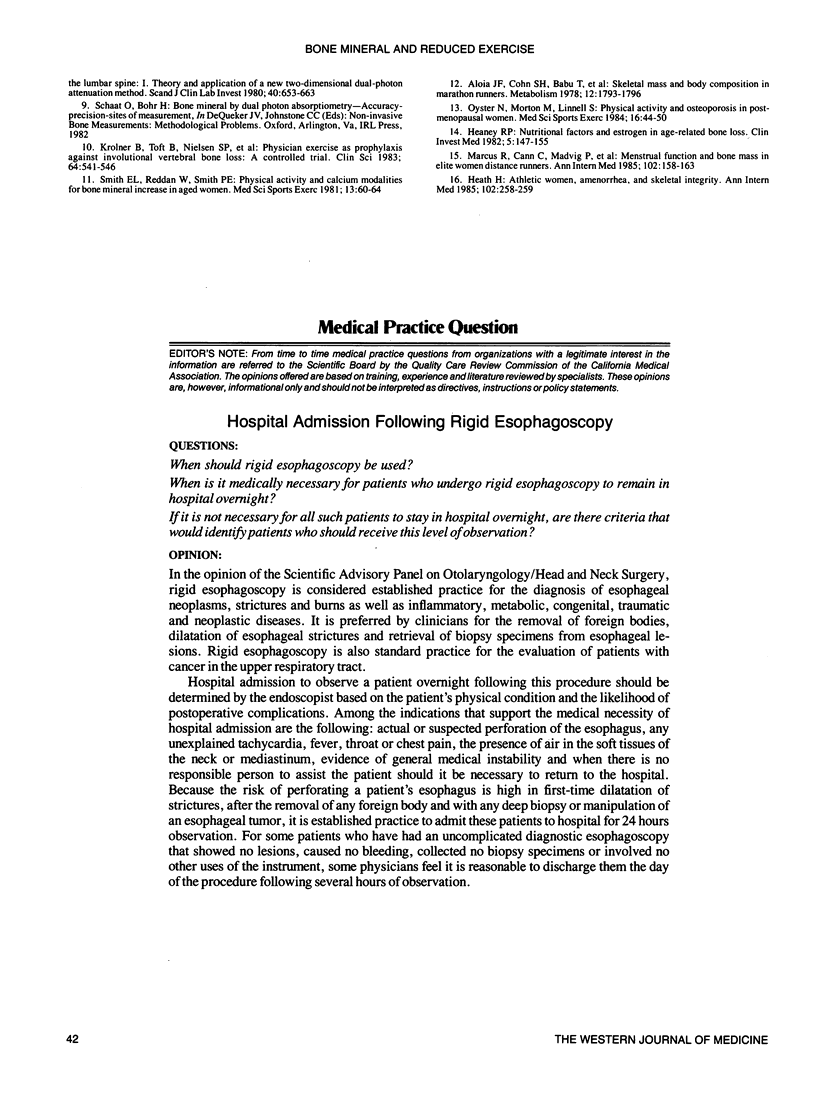
Images in this article
Selected References
These references are in PubMed. This may not be the complete list of references from this article.
- Aloia J. F., Cohn S. H., Babu T., Abesamis C., Kalici N., Ellis K. Skeletal mass and body composition in marathon runners. Metabolism. 1978 Dec;27(12):1793–1796. doi: 10.1016/0026-0495(78)90265-2. [DOI] [PubMed] [Google Scholar]
- Brisson G. R., Volle M. A., DeCarufel D., Desharnais M., Tanaka M. Exercise-induced dissociation of the blood prolactin response in young women according to their sports habits. Horm Metab Res. 1980 May;12(5):201–205. doi: 10.1055/s-2007-996242. [DOI] [PubMed] [Google Scholar]
- Cann C. E., Martin M. C., Genant H. K., Jaffe R. B. Decreased spinal mineral content in amenorrheic women. JAMA. 1984 Feb 3;251(5):626–629. [PubMed] [Google Scholar]
- Drinkwater B. L., Nilson K., Chesnut C. H., 3rd, Bremner W. J., Shainholtz S., Southworth M. B. Bone mineral content of amenorrheic and eumenorrheic athletes. N Engl J Med. 1984 Aug 2;311(5):277–281. doi: 10.1056/NEJM198408023110501. [DOI] [PubMed] [Google Scholar]
- Heaney R. P. Nutritional factors and estrogen in age-related bone loss. Clin Invest Med. 1982;5(2-3):147–155. [PubMed] [Google Scholar]
- Heath H., 3rd Athletic women, amenorrhea, and skeletal integrity. Ann Intern Med. 1985 Feb;102(2):258–260. doi: 10.7326/0003-4819-102-2-258. [DOI] [PubMed] [Google Scholar]
- Klibanski A., Neer R. M., Beitins I. Z., Ridgway E. C., Zervas N. T., McArthur J. W. Decreased bone density in hyperprolactinemic women. N Engl J Med. 1980 Dec 25;303(26):1511–1514. doi: 10.1056/NEJM198012253032605. [DOI] [PubMed] [Google Scholar]
- Krølner B., Toft B., Pors Nielsen S., Tøndevold E. Physical exercise as prophylaxis against involutional vertebral bone loss: a controlled trial. Clin Sci (Lond) 1983 May;64(5):541–546. doi: 10.1042/cs0640541. [DOI] [PubMed] [Google Scholar]
- Lindberg J. S., Fears W. B., Hunt M. M., Powell M. R., Boll D., Wade C. E. Exercise-induced amenorrhea and bone density. Ann Intern Med. 1984 Nov;101(5):647–648. doi: 10.7326/0003-4819-101-5-647. [DOI] [PubMed] [Google Scholar]
- Linnell S. L., Stager J. M., Blue P. W., Oyster N., Robertshaw D. Bone mineral content and menstrual regularity in female runners. Med Sci Sports Exerc. 1984 Aug;16(4):343–348. [PubMed] [Google Scholar]
- Marcus R., Cann C., Madvig P., Minkoff J., Goddard M., Bayer M., Martin M., Gaudiani L., Haskell W., Genant H. Menstrual function and bone mass in elite women distance runners. Endocrine and metabolic features. Ann Intern Med. 1985 Feb;102(2):158–163. doi: 10.7326/0003-4819-102-2-158. [DOI] [PubMed] [Google Scholar]
- Oyster N., Morton M., Linnell S. Physical activity and osteoporosis in post-menopausal women. Med Sci Sports Exerc. 1984;16(1):44–50. [PubMed] [Google Scholar]
- Smith E. L., Jr, Reddan W., Smith P. E. Physical activity and calcium modalities for bone mineral increase in aged women. Med Sci Sports Exerc. 1981;13(1):60–64. [PubMed] [Google Scholar]
- Wilson C. R., Madsen M. Dichromatic absorptiometry of vertebral bone mineral content. Invest Radiol. 1977 Mar-Apr;12(2):180–184. doi: 10.1097/00004424-197703000-00014. [DOI] [PubMed] [Google Scholar]



